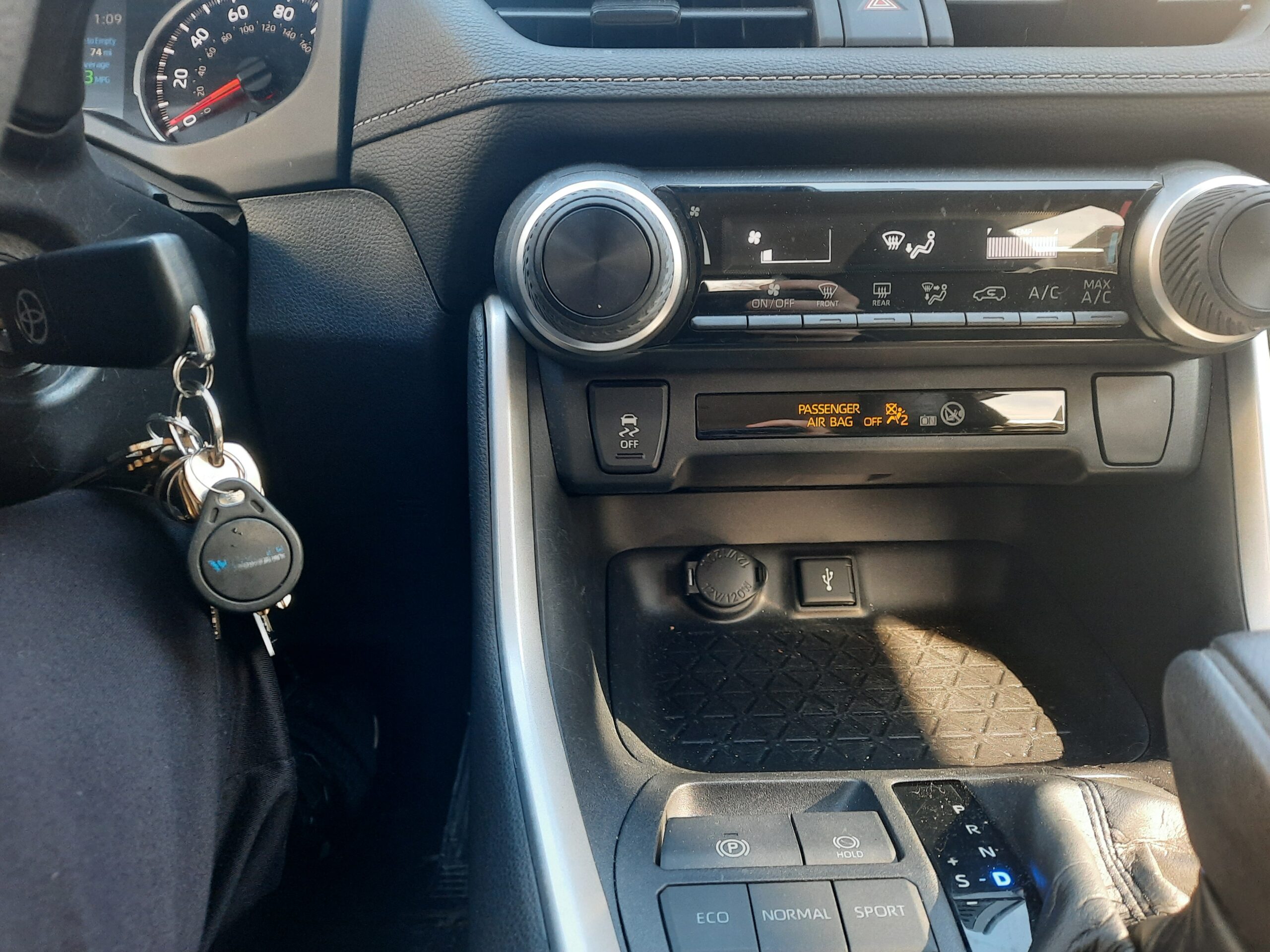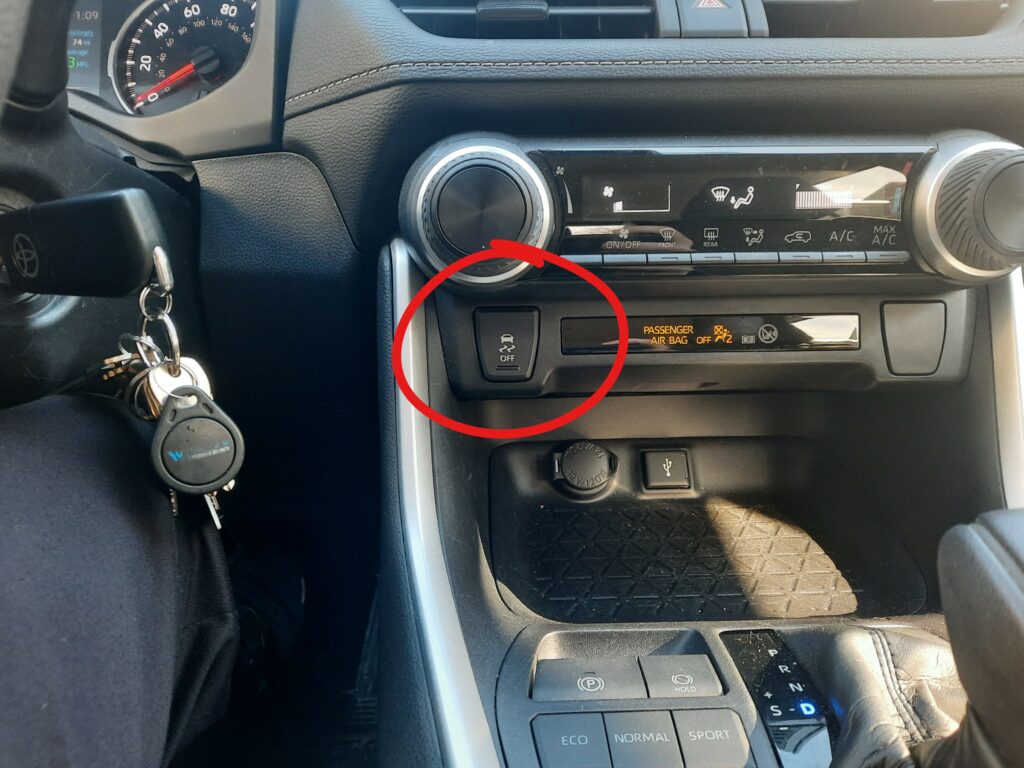Toyota’s VSC Light (Here’s What It Means)
Since 1995, Toyota has included Vehicle Stability Control (VSC) in its vehicles. Since that time, the system has been continually improved. The topic of VSC brings up numerous questions for drivers.
In this article, I answer your top questions. By the end of this guide, you’ll become an expert in the Vehicle Stability Control system and its warning light.

What Is VSC?
VSC stands for Vehicle Stability Control. This stability control system by Toyota has been around since 1995 but only became federally mandated in 2012.
Vehicle Stability Control helps maintain directional stability. It maintains traction by reducing or cutting power to the wheels. This system also sends braking power to the wheels that need to stop spinning. It’s designed for more safety when cornering.
What It Means
Simply put, when the VSC Light is on, it means that the Vehicle Stability Control is off. It may be that you’ve shut down the system manually, so the light will go off once the system is back on.
Otherwise, there is a problem with the Vehicle Stability Control system. Either way, you may notice less control while cornering, especially if you are driving on slick or slippery road surfaces.
Benefits
As outlined in the helpful video below, the VSC system provides numerous benefits. Here are a couple to consider.
- Applies braking power to maintain stability while cornering
- Modulates engine speed to control swerving
Without the VSC system, your car is going to snap back and forth while taking turns, especially at higher speeds. You may not be able to control the vehicle during these moments, leading to a potential accident.
Traction control isn’t the same thing as Vehicle Stability Control, although the same components are used. Traction control works similarly, but it maintains control during acceleration. It’s also designed to control slippage once traction is lost.
Why the VSC Light Is On
There are only a handful of reasons why the VSC Light comes on.
- You’ve turned the system off
- The VSC system is malfunctioning
To figure out which one of these is the problem, a diagnosis by a mechanic is needed.
How It Works
Without Vehicle Stability Control, as soon as the front wheels start slipping, the car won’t turn into the curve. It doesn’t turn even if you are maneuvering the steering wheel in the right direction. This is because traction in the front tires has been lost.
Once your tires regain traction, it may overcompensate, putting you in the path of oncoming traffic.
If the rear wheels slide, the vehicle may spin out. Even driving into the direction of the skid may not be enough to save you.
With Vehicle Stability Control, the direction of the steering wheel and the vehicle agree. If the wheels start to slip, engine power is reduced and brakes are applied where needed to regain control.
As an example, if the front right wheel starts slipping, the VSC system reduces engine speed to slow that specific wheel down. The system also applies additional braking power to the wheel if it needs to slow down further. The other wheels are not affected.
The system is automatic. There’s nothing you need to do to make it activate.
Check out this video demonstration of VSC:
How to Turn It On/Off
If you must deactivate the system, follow these steps.
- Stop the vehicle in a safe location
- Press and hold down the VSC/traction control button located near the gear shifter or steering wheel
You’ll know the system is deactivated because the VSC OFF indicator light will appear on the dashboard. At the same time, the TRAC OFF will also illuminate. Alternatively, you may see a message on the dashboard. This could vary slightly depending on your Toyota model.
To turn VSC back on, follow these steps.
- Look for the VSC OFF light on the dashboard to confirm that the system is off
- Press the VSC/traction control button located near the gear shifter or steering wheel
To indicate that the system is back on, the VSC and TRAC lights disappear from the dashboard. If they don’t, there is something wrong with the system.
VSC Button Location
All newer Toyota and Lexus vehicles come with a VSC button. It’s typically found near the steering wheel or by the gear selector.
Here is the location of the VSC button on my 2021 Toyota RAV4:

Older models may not have a VSC button because the system wasn’t included yet. If you are unsure what you have or where to find the button, reference your owner’s manual. The information may be listed in a section titled “Using the Driving Support Systems” or something similar to it.
When To Turn It Off
In general, Toyota doesn’t recommend turning the VSC off. However, there’s a button that allows for the system to be deactivated, so there must be a reason.
The only legitimate time to turn off the VSC is when both of the front wheels get stuck in mud or snow. To rock the vehicle free, both the VSC and TRAC systems must be off. Once you are on solid ground again, the systems should be activated.
What a Flashing VSC Light Means
If the VSC light is flashing, there’s a problem with the system. At the same time, the TRAC light may also come on. These warnings indicate failure in the systems. The fault requires attention from an expert mechanic.
Is It Safe to Drive?
Unless you’ve deactivated the system to get the vehicle out of a stuck situation, you don’t want to drive with the VSC light for long.
Although it won’t hurt the vehicle to drive with the VSC light on, this safety system is designed to prevent accidents and it must be activated to work. It is an important safety feature that should be fixed as soon as possible.
The Vehicle Stability Control ensures that the vehicle moves in the direction of the steering wheel. Without it, you are putting yourself and others in danger.
As an example, a study was performed to determine the effectiveness of VSC before it was included in all vehicles. Across six states, police crashes were evaluated. 13,987 vehicles involved in the crashes didn’t have VSC, while 5,671 vehicles did.
The results show an 11.2% reduction in multi-vehicle front crash involvement for vehicles with VSC. Additionally, a 52.6% reduction in single-vehicle crashes occurred (National Library of Medicine).
If that’s not enough proof that VSC works, I’m not sure what is. Do yourself a favor and keep the VSC system working.
Vehicle Stability Control is for Your Safety
Toyota continues to lead the charge in safety systems for your protection. Every new Toyota vehicle comes standard with Vehicle Stability Control. This technology ensures a better driving experience. If you see the Toyota VSC light, you must pay attention.
If you’ve inadvertently turned off the stability control system, reactivate it immediately. Otherwise, have a qualified mechanic determine the root of the problem, so you can drive with confidence.
